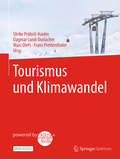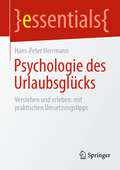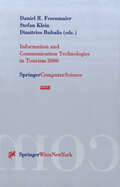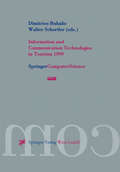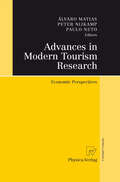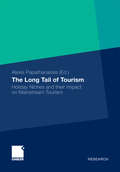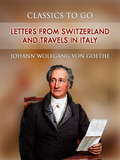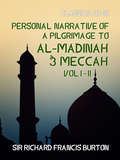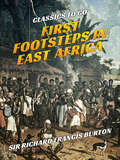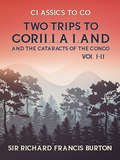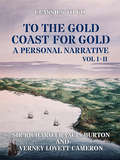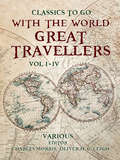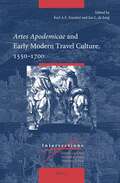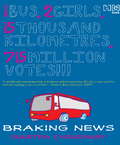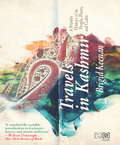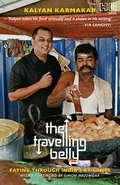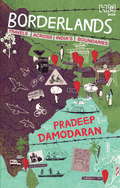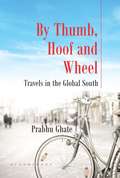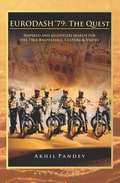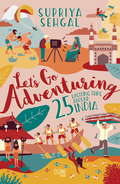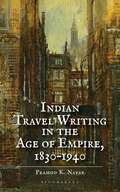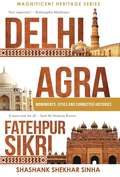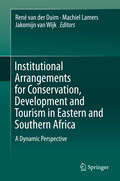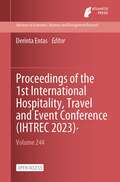- Table View
- List View
Tourismus und Klimawandel
Diese Open-Access-Publikation beleuchtet die komplexen Beziehungen zwischen Tourismus und Klimawandel für die Tourismusdestination Österreich und basiert auf einer umfassenden Erhebung, Zusammenfassung und Bewertung des aktuellen Standes der Forschung zu diesem Thema. Für diesen Bericht haben 40 Wissenschaftler*innen führender Forschungseinrichtungen, unterstützt durch ein internationales Team an Begutachter*innen, mehr als zwei Jahre intensiv zusammengearbeitet.Die dargestellten Forschungsarbeiten zum Einfluss des Klimawandels auf den Tourismus gehen davon aus, dass sich die in den nächsten Jahrzehnten zu erwartenden Veränderungen des Klimas sehr stark auf die österreichische Tourismusbranche auswirken werden. Allerdings fällt dem Sektor auch eine nicht unerhebliche Rolle als Mitverursacher des Klimawandels zu. Aktuellen Untersuchungen zufolge verursacht der Tourismus rund 8% aller globalen CO2-Emissionen. Vor diesem Hintergrund werden für die verschiedenen Teilaspekte des touristischen Angebots geeignete Minderungs- und Anpassungsmaßnahmen vorgestellt und diskutiert.Der Bericht verdeutlicht insbesondere die spezifische Betroffenheit der touristischen Outdoor-Aktivitäten vom Wintersport bis zum Golftourismus, beschreibt die neuen Herausforderungen für den Städtetourismus und die Organisation von Events und beleuchtet ausführlich, wie Anpassungsmöglichkeiten, insbesondere im Bereich der Mobilität, der Beherbergung, touristischer Indoor-Angebote, sowie der Gastronomie und Kulinarik, ausgestaltet und umgesetzt werden können. Dabei werden die Verantwortung und die Möglichkeiten des Reisenden ebenso dargestellt, wie die Handlungsoptionen von Betrieben, Destinationen und der rahmensetzenden nationalen Politik. Das Buch macht deutlich, dass, um die Pariser Klimaziele erreichen zu können, ein veränderter Lebensstil und rasche Umsetzungsschritte notwendig sind. Wie dieser „Paris-Lifestyle“ erreicht werden könnte und welche Herausforderungen auf diesem Weg bewältigt werden müssen, verdeutlichen die zusammenfassenden Schlusskapitel.Die vorliegende differenzierte Aufbereitung des Themas für alle Reisenden, die Tourismusbranche und die Politik war nur durch eine gezielte Förderung aus Mitteln des Klima- und Energiefonds im Rahmen des Programms „Austrian Climate Research Programme – ACRP“ möglich.
Psychologie des Urlaubsglücks: Verstehen und erleben: mit praktischen Umsetzungstipps (essentials)
by Hans-Peter HerrmannMenschen streben beständig nach Glück. Diese Thematik nimmt über die gesamte Lebensspanne eine zentrale Bedeutung ein. Neben Jobglück gibt es auch ein Urlaubsglück. Diesem Thema widmet sich dieses essential und geht u.a. folgenden Fragen nach: Was ist Urlaubsglück?Gibt es einen Zusammenhang von Reisemotiven und Glücksgefühlen?Wie lassen sich richtige Reiseentscheidungen treffen?Wodurch entsteht Urlaubsstress?Was ist unter einem Flow-Erleben zu verstehen?Sie erhalten dazu Anregungen und praktische Tipps, um Ihrem Urlaubsglück ein Stück näher zu kommen. Zielgruppen:Glück- und Erholungssuchende, Interessierende Reisende, Reisemittler/Reiseberater, Reiseveranstalter, Touristische Leistungsträger (Hotels, Verkehrsträger, etc.), Feriendestinationen
Information and Communication Technologies in Tourism 2000: Proceedings of the International Conference in Barcelona, Spain, 2000
by Daniel R. Fesenmaier Stefan Klein Dimitrios BuhalisENTER has now met for six years, providing a valuable forum for researchers and practitioners to discuss and debate their ideas and perspectives regarding the nature and role of tourism and information technology in global society. Over the years, the nature and rate of change in the tourism industry has been overwhelming. The internet and related technologies are now dominant agents of change and have created a "new economy" which requires new processes and strategies to replace those developed for the "old economy". The theme of ENTER 2000, "Keeping Pace with Change - New Frontiers for IT and Tourism", captures the challenges that we face at the beginning of the new millennium. The papers included in this volume illustrate the incredible growth in research and development in this area and reflect its youth, vitality and at the same time, maturation. Perhaps most important, these papers document how this new technology has changed and, in tum, how the industry has responded. The series of proceedings of which this volume is a part is creating a unique body of knowledge about the intertwined emergence of tourism and technology. There are, perhaps, three overriding themes of this congress. First is the focus on the tourist. Professor Stock's keynote address "Intelligent Interfaces for the Tourist" is a good representative of a series of papers discussing how information systems, electronic markets, and user interfaces have been or can be developed to enhance the tourist experience.
Information and Communication Technologies in Tourism 1999: Proceedings of the International Conference in Innsbruck, Austria, 1999
by Dimitrios Buhalis Walter SchertlerDuring the last couple of years we learned that infonnation and communication technologies have to be seen as key factors for the success in various industries. Especially in tourism it became evident, that missing the developments in this sector could not only be fatal for the unfolding of the businesses, but also unrenouncable in order to withstand in competition. The objective of ENTER is to show the chance that infonnation technology offers for all participants in the touristic competition to act successfully in permanently changing infonnation environments. It reflects the important role of infonnation technologies in this field. Within the last six years ENTER united various experts - practitioners as well as researchers - to exchange their experiences, ideas and visions in the sector of tourism and infonnation technology. The conferences scope is to provide an international platfonn to discuss the topical situation and future trends, and the possibilities to shape the own strategies. The various points of view of all the participants in workshops, reports and discussions always lead to most interesting perceptions.
Advances in Modern Tourism Research: Economic Perspectives
by Álvaro Matias Peter Nijkamp Paulo NetoModern Advances in Tourism Research provides a thorough assessment of state-of-the-art academic research in this field of economic science. The authors start by scoping the scene of tourism research. They progress to a comprehensive analysis of themes of particular interest for researchers and academics interested in the workings of the tourism markets, such as new analysis frameworks in tourism economics and new operational tools in tourism research.
The Long Tail of Tourism: Holiday Niches and their Impact on Mainstream Tourism
by Alexis PapathanassisThe ‘long tail’ of holiday offerings implies dramatic shifts in the sector’s concentration levels and its competitive dynamics. In order to examine the applicability and validity of this scenario, a number of key holiday niches are examined in terms of their demand development, supplier landscapes, operational challenges and future potential.
Letters from Switzerland and Travels in Italy (Classics To Go)
by Johann Wolfgang von GoetheShort excerpt: "Were, then, these Switzers free? Free, these opulent burghers in their little pent-up towns—free, those poor devils on their rocks and crags? What is it that man cannot be made to believe, especially when he cherishes in his heart the memory of some old tale of marvel? Once, forsooth, they did break a tyrant's yoke, and might for the moment fancy themselves free; but out of the carcase of the single oppressor the good sun, by a strange new birth, has hatched a swarm of petty tyrants. And so now they are ever telling that old tale of marvel: one hears it till one is sick of it. They formerly made themselves free, and have ever since remained free! and now they sit behind their walls, hugging themselves with their customs and laws—their philandering and philistering. And there, too, on the rocks, it is surely fine to talk of liberty, when for six months of the year they, like the marmot, are bound hand and foot by the snow."
Personal Narrative of a Pilgrimage to Al-Madinah & Meccah Vol I & Vol II (Classics To Go)
by Richard Francis BurtonCaptain Sir Richard Francis Burton's 19th travelogue is simply fascinating. In disguise and (I'm assuming he's accurate in this) at great risk to himself, Burton made a pilgrimage to Medina and Mecca. His intimate observations of customs, daily life, and travel in a foreign land are the sort that one sees best through the fresh eyes of an outsider, but normally an outsider would be denied that vantage. (Goodreads)
First Footsteps in East Africa: Or, An Exploration Of Harar; Volume 2 (Classics To Go)
by Richard Francis BurtonChock full of ethnographical information about the Muslims of Somalia, Richard Burton's "First Footsteps in Africa" is a great look at a white man's first forays into that area of the continent. (Goodreads)
Two Trips to Gorilla Land and the Cataracts of the Congo Vol I & Vol II (Classics To Go)
by Richard Francis Burton(Excerpt): "The notes which form the ground-work of these volumes have long been kept in the obscurity of manuscript: my studies of South America, of Syria and Palestine, of Iceland, and of Istria, left me scant time for the labour of preparation. Leisure and opportunity have now offered themselves, and I avail myself of them in the hope that the publication will be found useful to more than one class of readers. The many who take an interest in the life of barbarous peoples may not be displeased to hear more about the Fán; and the few who would try a fall with Mister Gorilla can learn from me how to equip themselves, whence to set out and whither to go for the best chance. Travelling with M. Paul B. du Chaillu's "First Expedition" in my hand, I jealously looked into every statement, and his numerous friends will be pleased to see how many of his assertions are confirmed by my experience."
To The Gold Coast for Gold A Personal Narrative Vol I & Vol II (Classics To Go)
by Richard Francis Burton(Excerpt): "Western Africa was the first field that supplied the precious metal to mediaeval Europe. The French claim to have imported it from Elmina as early as A.D. 1382. In 1442 Gonçales Baldeza returned from his second voyage to the regions about Bojador, bringing with him the first gold. Presently a company was formed for the purpose of carrying on the gold-trade between Portugal and Africa. Its leading men were the navigators Lanzarote and Gilianez, and Prince Henry 'the Navigator' did not disdain to become a member. In 1471 João de Santarem and Pedro Escobar reached a place on the Gold Coast to which, from the abundance of gold found there, they gave the name of 'São Jorje da Mina,' the present Elmina. After this a flood of gold poured into the lap of Europe; and at last, cupidity having mastered terror of the Papal Bull, which assigned to Portugal an exclusive right to the Eastern Hemisphere, English, French, and Dutch adventurers hastened to share the spoils."
With the World Great Travellers Vol 1 - 4 (Classics To Go)
by Charles MorrisExcerpt: "Next to actual travel, the reading of first-class travel stories by men and women of genius is the finest aid to the broadening of views and enlargement of useful knowledge of men and the world’s ways. It is the highest form of intellectual recreation, with the advantage over fiction-reading of satisfying the wholesome desire for facts. With all our modern enthusiasm for long journeys and foreign travel, now so easy of accomplishment, we see but very little of the great world. The fact that ocean voyages are now called mere “trips” has not made us over-familiar with even our own kinsfolk in our new dependencies. Foreign peoples and lands are still strange to us. Tropic and Arctic lands are as far apart in condition as ever; Europe differs from Asia, America from Africa, as markedly as ever. Man still presents every grade of development, from the lowest savagery to the highest civilization, and our interest in the marvels of nature and art, the variety of plant and animal life, and the widely varied habits and conditions, modes of thought and action, of mankind, is in no danger of losing its zest."
Artes Apodemicae and Early Modern Travel Culture, 1550-1700 (Intersections Ser. #64)
by Karl Enenkel Jan JongAn exploration of the early modern manuals on travelling (Artes apodemicae), which originated in the sixteenth century, when it became communis opinio among intellectuals that an extended tour abroad was an indispensable part of humanist, academic and political education.
Braking News
by Sunetra ChoudharyFor two months prior to the general elections in May 2009 NDTV anchor and TV reporter Sunetra Choudhary, along with her colleague Naghma Sahar, clambered onto a bus equipped with some Club Class seating, the requisite machinery to beam out live from the remotest parts of India, and a motley crew of cameramen and engineers. Notching up 200 kilometres a day, she and her colleagues trundled the bylanes and boondocks of Bharat in search of the elusive Indian voter, and an insight into his mind. Lurching into villages without electricity in UP, to tribal settlements in Jharkand, to Baripada in Orissa and Kanchipuram in Tamil Nadu they beamed out a daily show called the Election Express, that spoke one on one with the locals and tried to understand the issues that determined their lives.Part travelogue, part election special, part candid confessions of an inveterate TV camera-time junkie, this book is a delightfully frank account of one woman’s understanding of why the country voted as it did; and how obvious it is, once out of the larger cities that development is the ultimate vote-getter.
Travels in Kashmir: A Popular History Of Its People, Places And Crafts
by Brigid Keenan‘A beautifully written, meticulously researched journey through time in Kashmir’ – Basharat Peer The very name Kashmir conjures up magical images, from the real garden paradise of Shalimar to Thomas Moore’s fantastic descriptions in “Lalla Rookh”. Recounting the story of this colourful and fascinating region as it appears in travel writing, literature, and historical works from ancient times to the present day, Travels in Kashmir offers a lively and comprehensive guide to a land little understood in the West. Beginning with an informal history of Kashmir – from the legends of the twelfth-century Kalhana to the accounts of British colonial rulers – the book brings together a wide variety of engaging travellers’ tales, reports, and descriptions that vividly illustrate the changing perceptions of the area – both Indian and European – throughout the years. Of particular interest is a section on the arts, crafts, and craftspeople of Kashmir, which focuses specifically on the shawl-weaving, carpet-making, and papier mâché works that have gained international renown. Throughout, Keenan proves a sharp as well as sympathetic observer with an eye for the amusing and the poignant, and the entertaining way she unfolds the story of Kashmir’s people, places, and crafts makes this a book that will be enjoyed by tourists, readers of travel writing, and anyone interested in one of the most unusual and beautiful places in the world.'
The Travelling Belly: Eating Through India's By-Lanes
by Kalyan KarmakarMeet the man who will go to any length in search of a good meal Popular food blogger and Kalyan Karmakar has spent a lifetime being obsessed with food. In The Travelling Belly, he takes you on a delectable journey through the crowded lanes of India’s food havens, guiding you towards the good, and veering you away from the bad and the ugly of India’s multifarious urban foodscapes. Join him as he traces the many intricacies of the true-blue Bengali mahabhoj in Kolkata; dives deep into the kebab-laden alleys of Old Delhi; quests for the original Tunday in Lucknow; tracks down the crispiest kulchas in Amritsar and digs out the perfect Bohri meal in Mumbai. From sampling the biryani in Hyderabad to falling in love with the dosa in Chennai; from uncovering the best breakfast in Bangalore to getting to the heart of the home-cooked Goan meal, Kalyan’s food journeys will take you on a sensory experience that is as delicious as it is revelatory. Flavoured with the characteristic candour that his blog, Finely Chopped, is famous for, The Travelling Belly comes with recommendations from master chefs and food writers across India, providing a fascinating taste of the smorgasbord that is India’s cuisine and reaffirming how in India, more than anywhere else in the world, we are what we eat.
Borderlands: TRAVELS ACROSS INDIA’S BOUNDARIES
by Pradeep DamodaranFor most residents of India’s bustling metros and big towns, nationality and citizenship are privileges that are often taken for granted. The country’s periphery, however, is dotted with sleepy towns and desolate villages whose people, simply by having more in common with citizens of neighbouring nations than with their own, have to prove their Indian identity every day. It is these specks on the country’s map that Pradeep Damodaran rediscovers as he travels across India’s borders for a little more than a year, experiencing life in far-flung areas that rarely feature in mainstream conversations. In Borderlands, he recounts his encounters with the war-weary fishermen of Dhanushkodi at the southernmost tip of Tamil Nadu, who live in fear both of the Indian Coast Guard and the Sri Lankan navy; farmers in Hussainiwala, a village on Punjab’s border with Pakistan, who are unwilling to build concrete houses for fear of them being destroyed in the ever looming war; Tamil traders of Moreh, a town straddling the Manipur–Myanmar border, who pay bribes to at least ten different militant organizations so they can safely conduct their business; and ex-servicemen in Campbell Bay who were resettled there three generations ago and have long been forgotten by the mainland. From Minicoy in Lakshadweep to Taki in West Bengal, Tawang in Arunachal Pradesh to Raxaul in Bihar, Damodaran’s compelling narrative reinforces the idea that, in India, a land of contrasts and contradictions, beauty and diversity, conflict comes in many forms.
By Thumb, Hoof and Wheel: Travels in the Global South
by Prabhu GhatePrabhu Ghate takes us off the beaten track on selected journeys in Asia, Africa, Latin America and Antarctica, and shows us that you don't have to be rich to travel simply, or even young for that matter – just young at heart, empathetic, and curious. The book should stimulate interest in a variety of trips in our extended neighbourhood, and in the South generally, where travelling is not only more affordable, but in countless ways more interesting. The author takes us through his adventures and brushes with history, whether the building of the Berlin Wall, wandering into Somaliland, running smack into a civil war in Cyprus, taking a front seat in the People Power revolution in the Philippines, getting arrested during the Dirty War while trying to track down a group of Sikh settlers in a remote part of Argentina, catching a cargo boat down the Mekong from China, or riding a paddle steamer up the Nile for ten days in what is today South Sudan. By Thumb, Hoof and Wheel is entertaining, educative, and completely from a different world – a world that is rapidly changing with the forces of global homogenization. Experience a bit of it before it is lost forever.
EURODASH 79: The Quest - Inspired and Relentless Search for the True Knowledge, Culture & Values
by Akhil PandeyThe book combines the account of a journey that at times was difficult and tortuous but overall fantastical and life changing experience. The team made the approximately 20,000 kilometres return journey from India through the port of Kuwait, the vast Arabian Desert, then into Eastern Europe, through the soaring majestic Alps and into Central Europe by road, on motorbikes, in a 100 days, on a shoestring budget of $5 a day per person.The book is written in a conversational style which makes it readable for a wide audience. It reads like fiction, but it is a factual representation of events that the team experienced. The book has few unique features. Each chapter begins with a parable from a Gospel. These stories generate subtle answers to life's questions; build faith and generate purpose in life. Through these parables, the author shares some significant life lessons like humility, love, conflict management, etc., and successfully connects them with the theme. Each chapter has relevant leadership traits that such challenges and experiences in life bring forth in us. To conclude, for every single individual who dreams to travel but does not dare-here is the book that offers encouragement and empowers readers to embrace their passion and follow their dreams.
Let’s Go Adventuring: 25 Exciting Trips around India
by Supriya SehgalMisty mountains and secret forest trails Roadside dentists with terrible teeth Gods with permission to bunk school Chutneys made from red ants Battles fought in the sky Join Supriya Sehgal as she tumbles down a frothy river on a raft, swooshes through the snowy slopes of a mountain, visits a spooky shrine, tastes an unusual dish, crosses a bridge made of roots and discovers a whole bunch of delightful things to see, do and experience around India. Filled with quirky illustrations, activities, travel tips, fabulous facts and travel stories more essential than anything in your bags, Let’s Go Adventuring is perfectly packed for history hunters, nature nomads and every other kind of explorer!
Indian Travel Writing in the Age of Empire: 1830–1940
by Pramod K. NayarIndian Travel Writing in the Age of Empire studies a variety of travel narratives by Indian kings, evangelists, statesmen, scholars, merchants, leisure travellers and reformers. It identifies the key modes through which the Indian traveller engaged with Europe and the world-from aesthetic evaluations to cosmopolitan nationalist perceptions, from exoticism to a keen sense of connected and global histories. These modes are constitutive of the identity of the traveller. The book demonstrates how the Indian traveller defied the prescriptive category of the 'imperial subject' and fashions himself through this multilayered engagement with England, Europe and the world in different identities.
Delhi, Agra, Fatehpur Sikri: Monuments, Cities and Connected Histories
by Shashank Shekhar Sinha‘Very impressive ... It will enrich the understanding of those interested in the history not only about these buildings but also more widely about historical monuments and their preservation’ – Rudrangshu Mukherjee, Chancellor and Professor of History at Ashoka University‘The first real attempt to bring historical sites and buildings of the past within the reach of the masses … A must-read for all’ – Syed Ali Nadeem Rezavi, author of Fathpur Sikri Revisited‘Offers an excellent academic–public interface for the study of monuments, the cities in which they are located, and their extended geocultural connections’ – Rana Safvi, author of The Forgotten Cities of Delhi and Shahjahanabad‘A book to be read several times, in different ways’ – Swapna Liddle, author of Connaught Place and the Making of New DelhiDelhi, Agra, Fatehpur Sikri, historic cities of legend and lore and home to six UNESCO World Heritage Sites, have captured the imagination of Indians and the world at large for centuries. In this ambitious book, Shashank Shekhar Sinha traces the extraordinary pasts of the three imperial capitals, their monuments, settlements and extended geocultural connections, while presenting a graphic account of the iconic heritage sites – from the life and times of rulers who built them, their survival through periods of war, turmoil and conquests, to their present afterlives.Packed with intriguing and little-known stories about the monuments – busting several myths around them along the way – the book takes us on a journey from the pillared galleries of the mosque at the Qutb Minar complex, the majestic double dome of Humayun’s tomb, the bastions of the impenetrable Agra Fort, the picturesque pavilions at Fatehpur Sikri, the tapering minarets of the Taj Mahal, to finally the Mughal court of the Red Fort, giving us the full measure of their dazzling grandeur.ABOUT THE SERIESCombining powerful storytelling with deep, recent scholarship, the Magnificent Heritage series uses multidisciplinary approaches to showcase a fresh perspective on heritage sites and storied cities, locating them in their larger geographical, sociocultural and historical contexts.
Indian Travel Writing in the Age of Empire: 1830–1940
by Pramod K. NayarIndian Travel Writing in the Age of Empire studies a variety of travel narratives by Indian kings, evangelists, statesmen, scholars, merchants, leisure travellers and reformers. It identifies the key modes through which the Indian traveller engaged with Europe and the world-from aesthetic evaluations to cosmopolitan nationalist perceptions, from exoticism to a keen sense of connected and global histories. These modes are constitutive of the identity of the traveller. The book demonstrates how the Indian traveller defied the prescriptive category of the 'imperial subject' and fashions himself through this multilayered engagement with England, Europe and the world in different identities.
Institutional Arrangements for Conservation, Development and Tourism in Eastern and Southern Africa: A Dynamic Perspective
by René van der Duim Machiel Lamers Jakomijn Van WijkThis book presents an overview of different institutional arrangements for tourism, biodiversity conservation and rural poverty reduction in eastern and southern Africa. These approaches range from conservancies in Namibia, community-based organizations in Botswana, conservation enterprises in Kenya, private game reserves in South Africa, to sport hunting in Uganda and transfrontier conservation areas. The book presents a comparative analysis of these arrangements and highlights that most arrangements emerged in the 1990s through either a decentralized or centralized change trajectory that was sponsored by donors. They aim to address some of the challenges of the ‘fortress’ types of conservation by combining principles of community-based natural resource management with a neoliberal approach to conservation, evident in the use of tourism as the main mechanism for accruing benefits from wildlife. The book illustrates the empirical relevance of these novel arrangements by presenting their growth in numbers and discuss how these arrangements differ in their form. With respect to the conservation and development impacts of these arrangements, we show that they have secured large amounts of land for conservation, but also generated governance challenges and disputes on tourism benefit sharing, affecting the stability of these arrangements to generate socioeconomic and conservation benefits.
Proceedings of the 1st International Hospitality, Travel and Event Conference (Advances in Economics, Business and Management Research #244)
by Derinta EntasThis is an open access book.Reinventing Hospitality, Travel, and Event for a Future DirectionThe tourism industry is an important sector in the world, particularly in terms of its ability to create jobs, generate income and contribute to people's well-being. While of its importance, the tourism industry is vulnerable to external disruptions. Historically, the tourism industry has been vulnerable to terrorist attacks, recessions, pandemics, natural disasters, and the effects of climate change. Such challenges have also forced the industry to accelerate innovation and transformation to survive and thrive. Technology and digitalization are more commonly used in businesses and organizations' operations. There are shifts in consumer behavior as a result of disruptions. Travelers demand safer products and services and more efficient ways to travel. New products and services emerge as a result of the disruptions, for example, trends in virtual conferences, cloud kitchens, staycations, and many more.
